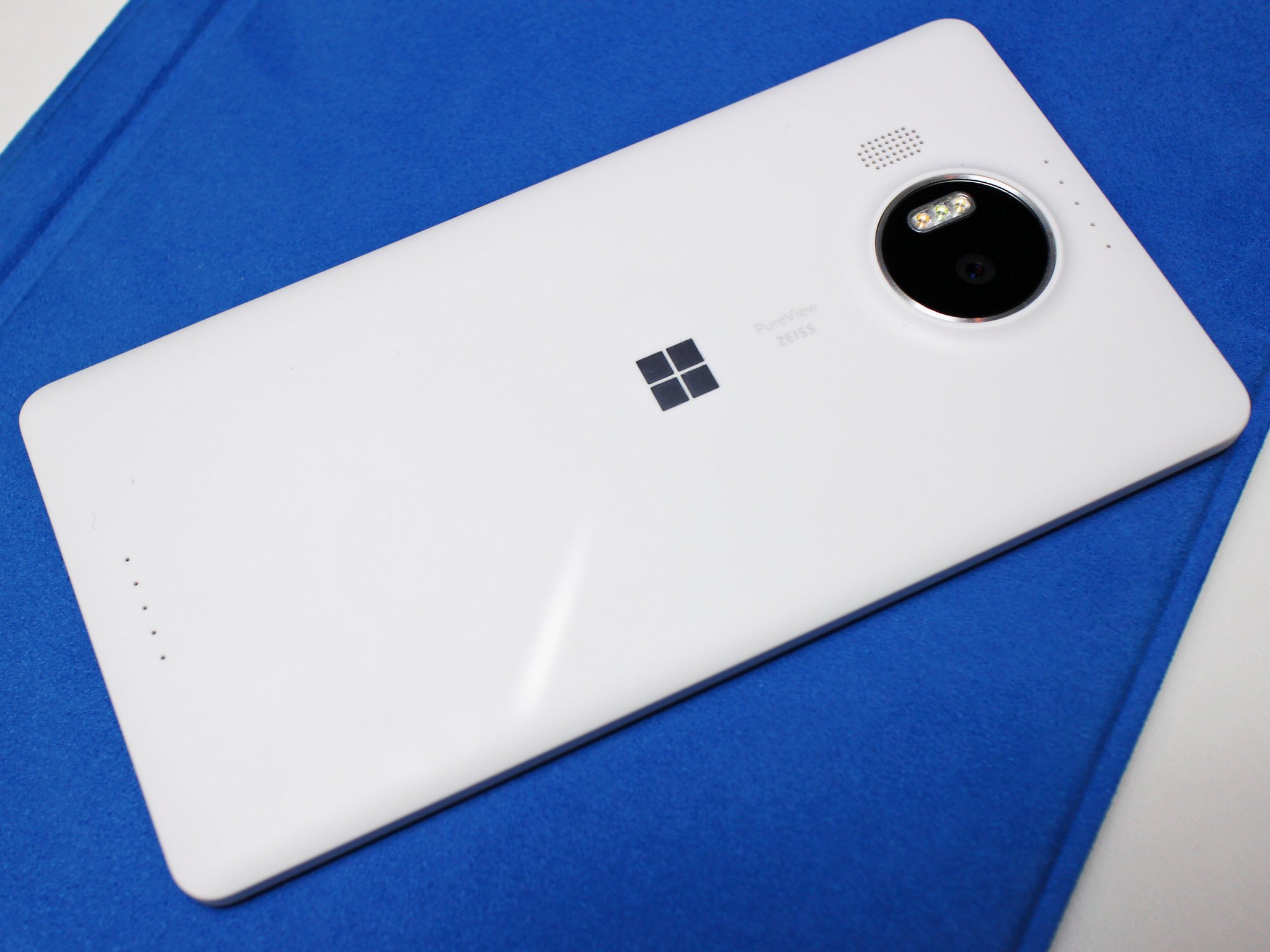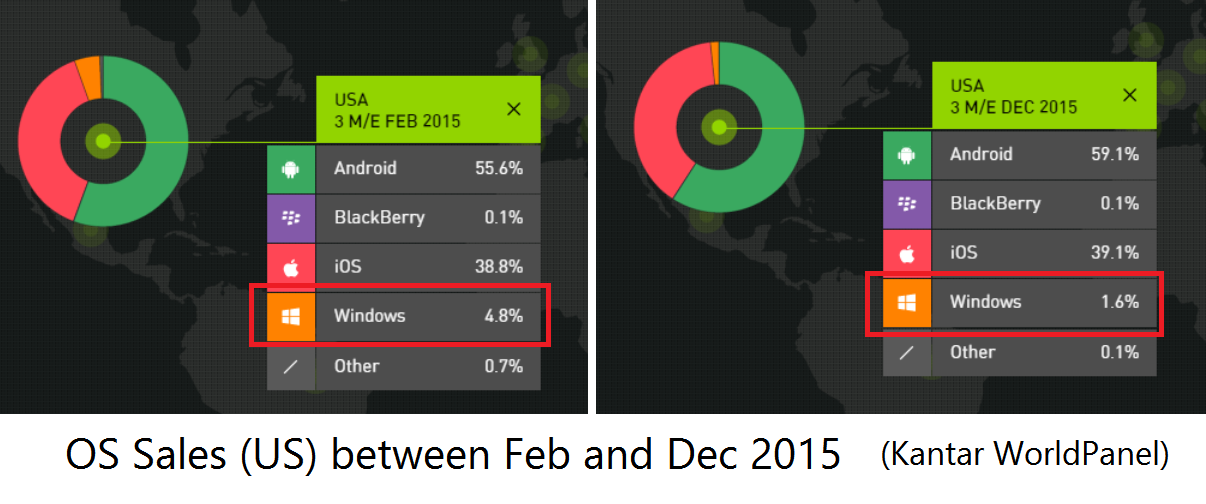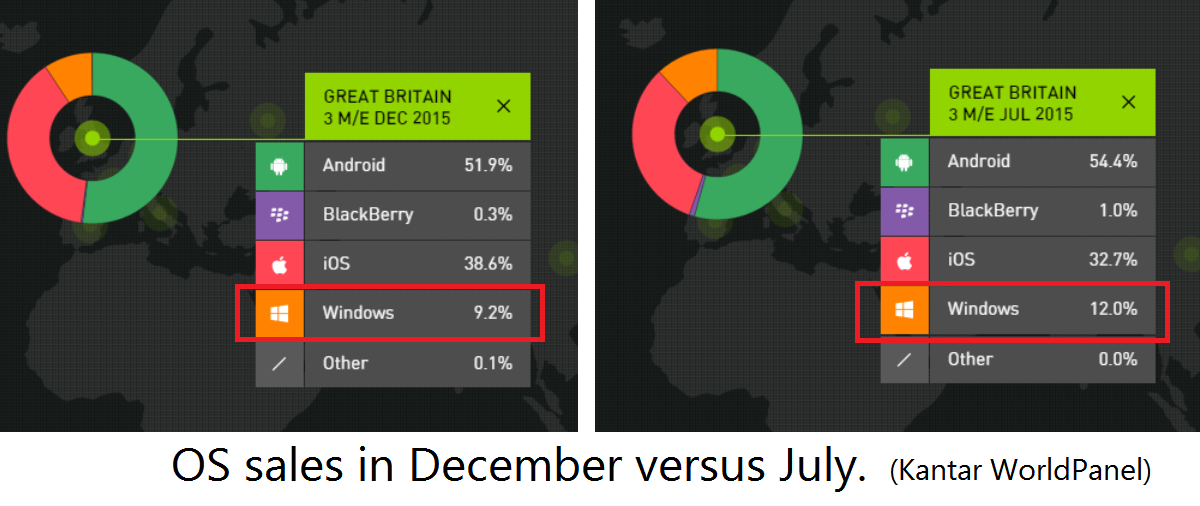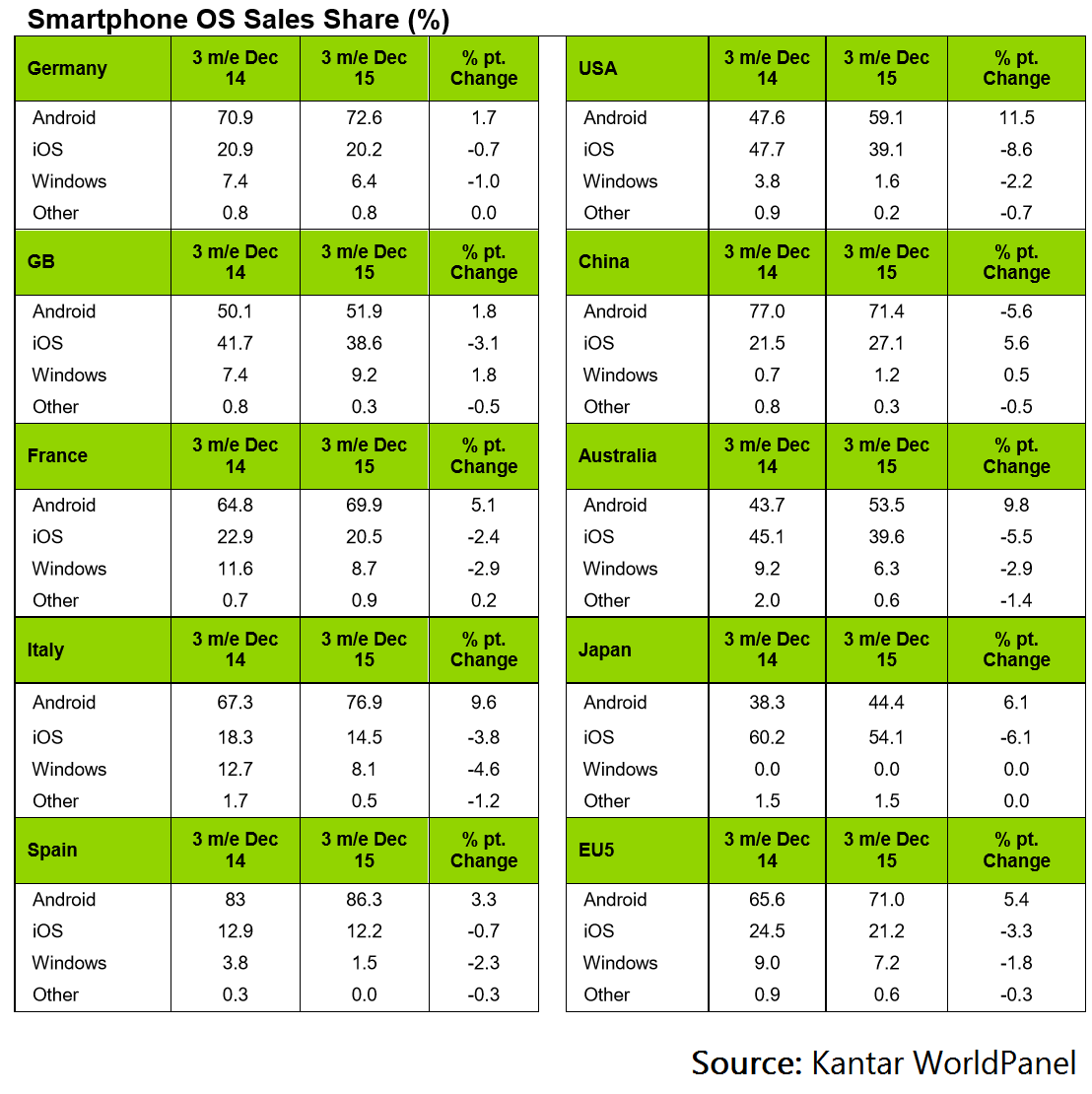Windows Phone sales in the US plummet to all-time low
Microsoft's mobile trouble continue to accelerate — especially in its home country.

Windows Phone has never really had a massive presence in the U.S. (at least not since the Windows Mobile days in 2007, but back then smartphones weren't selling in enormous quantities either), but in late 2015 Microsoft is hitting an all-time low for sales.
According to Kantar WorldPanel's latest numbers, Windows Phone market share in the US dipped down to 1.6 percent for December 2015. Just three months earlier in September 2015 that number sat at 3.9 percent.
Windows Phone sales peaked in March 2013 with 5.6 percent share, but momentum soon waned after that period. There was a slight rebound by February 2015 with a 4.8 percent portion, but that too quickly dwindled.

Looking at Kantar's back numbers through 2012 and it's hard to find a smartphone OS sales value this low for Windows Phone.
None of this should be surprising. Not only have there been very few high-end Windows Phones in the last two years, but carriers have also been reluctant to sell or promote those devices in the face of Apple's iPhone and Samsung for Android (not to mention the likes of HTC, LG, and others).
One thing that is clear, though, is that Windows Phone users left en masse during the holiday season. What exactly drove that shift is up for debate, though factors like expiring carrier contracts and tempting sales of competing devices likely compounded general dissatisfaction with the OS and the lack of an available Windows Phone upgrade path that many users face.
The new Lumia 950 is only available on one carrier – AT&T – and it did not become available until very late in November. Even then, tepid reviews and a lack of marketing kept the phone off the radar of most shoppers. The move was deliberate by Microsoft as they seem to know that the Lumia 950 and Lumia 950 XL are not the phones that will help them rebound.
Get the Windows Central Newsletter
All the latest news, reviews, and guides for Windows and Xbox diehards.
Microsoft has gone on record as saying they are retrenching in the smartphone space as they regroup and change their strategy for Windows 10 Mobile. At this time, however, it is not very clear where they go from here, as their OneCore and Universal Windows Platform are still in their early days.
Chris Capossela, Chief Marketing Officer for Microsoft, recently said that their Windows Phone program needs a 'spiritual equivalent' to Surface, and it is hard to disagree with him.
Whether or not the rumored 'Surface Phone' can do anything to shift attention remains to be seen later in 2016.
Europe still has some life
At least according to Kantar's numbers Great Britain is still holding on a bit to Windows Phone. The December sales share is at 9.2 percent, which is up by one percent from October. However, it still pales to the 12 percent for the three-month period ending in July 2015, and there is a clear long-term decline even there.

Other data for the three-month period ending in December 2015 include:
- France: 8.7% (sales down from a high of 13.1 percent in August)
- Great Britain: 9.2% (sales down from a high of 12 percent in July)
- Italy: 8.1% (sales down from a high of 14.2 percent in June)
- Germany: 6.4% (sales down from a high of 10.5 percent in June)
Analysis
It should be noted that Kantar WorldPanel measures sales of phones for three month periods and is not a measure of overall market share in total.
The numbers, if accurate, do represent momentum within the market for Android, iOS and Windows Phone. In other words, a few bad quarters of sales will result in an overall decline in market share for an OS. Since Windows Phone is, for the most part, declining in sales (or only rising slightly), the general picture does not look great.
Kantar's numbers do show some interest at least in parts of Europe for the new Lumia 550, Lumia 950 and Lumia 950 XL. The UK did see a small bump in sales of Windows Phone in from the previous quarter, but overall sales are down from the quarter a year earlier.

The takeaway though should be obvious. With fewer Lumia models available and only new high-end devices hitting the market late in 2015 there are just fewer choices for consumers who want a Windows Phone. Of course, that assumes that shoppers are even interested in purchasing a new Lumia to begin with, which in the face of a new (if incomplete) OS in Windows 10 Mobile and the continued 'app-gap' issue is not at all evident.
Microsoft still has some interest from customers in Europe, but for now, the U.S. will remain a remote land for Windows Phone sales —and that will likely not improve for the rest of 2016.
Source: Kantar WorldPanel

Daniel Rubino is the Editor-in-chief of Windows Central. He is also the head reviewer, podcast co-host, and analyst. He has been covering Microsoft since 2007 when this site was called WMExperts (and later Windows Phone Central). His interests include Windows, laptops, next-gen computing, and wearable tech. He has reviewed laptops for over 10 years and is particularly fond of 2-in-1 convertibles, Arm64 processors, new form factors, and thin-and-light PCs. Before all this tech stuff, he worked on a Ph.D. in linguistics, performed polysomnographs in NYC, and was a motion-picture operator for 17 years.
